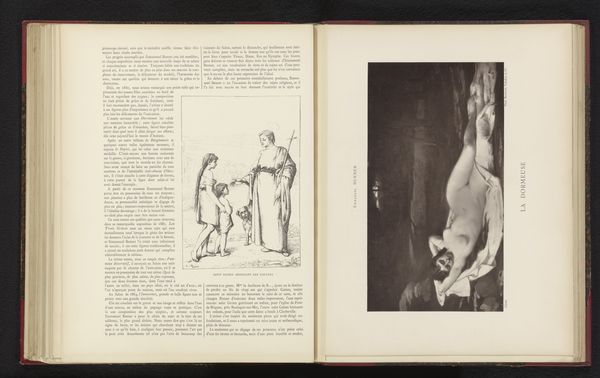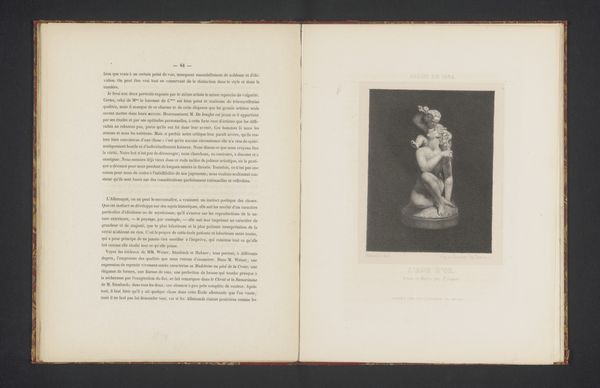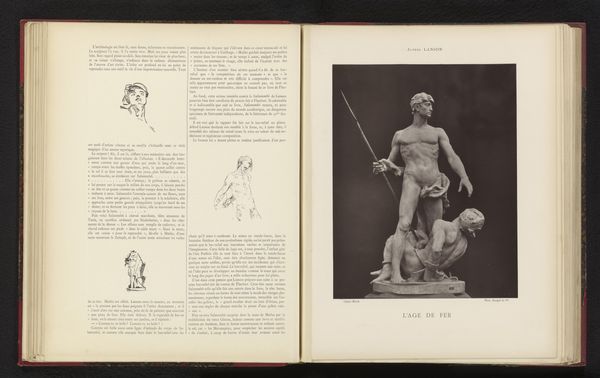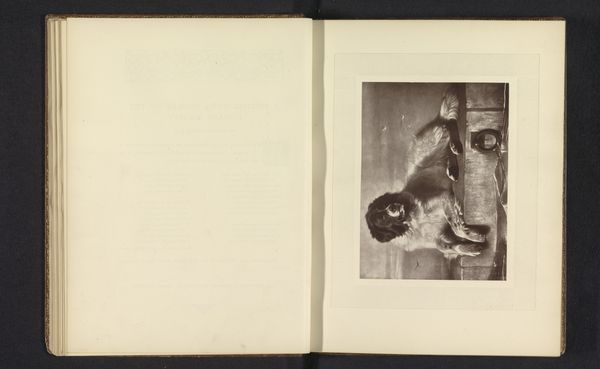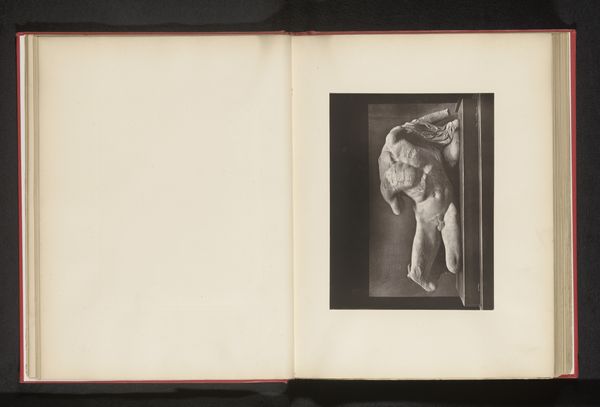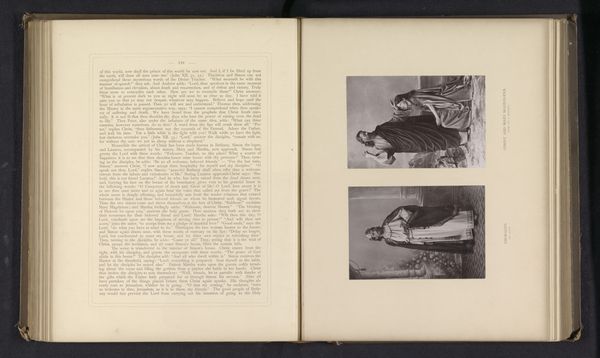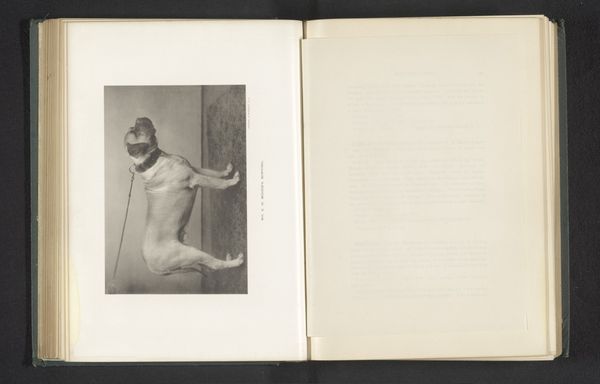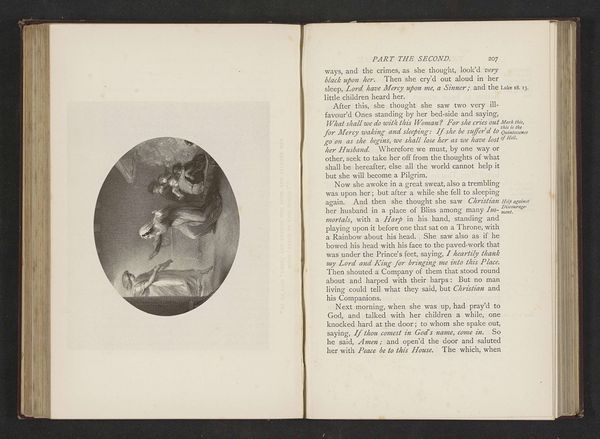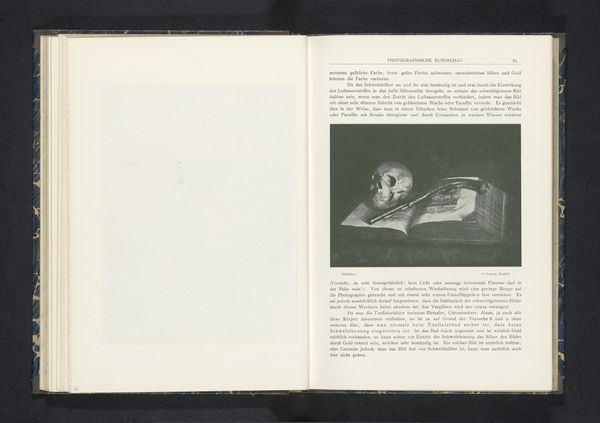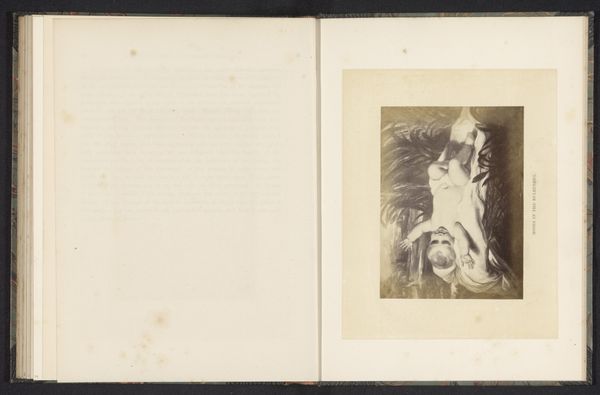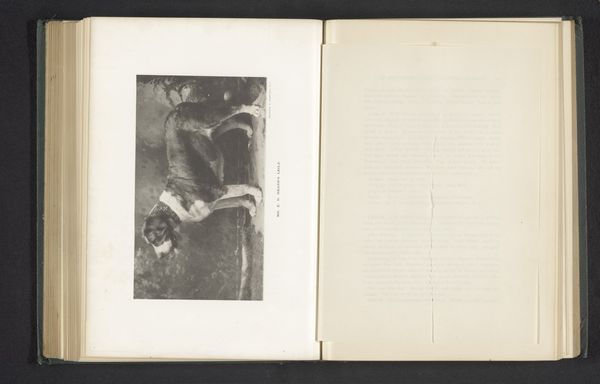
Dimensions: height 185 mm, width 237 mm
Copyright: Rijks Museum: Open Domain
Curator: Looking at this reproduced print of Henri Lehmann's 'Calypso' dating from before 1883, what strikes you most? Editor: Immediately, I see the striking use of chiaroscuro. The stark contrast between light and shadow creates a dramatic and almost theatrical scene. The texture also looks remarkably smooth despite the reproduction method. Curator: Indeed. Calypso, in Homer's Odyssey, is often associated with sorrowful longing. Do you find those feelings represented here through the application of shading in relation to Lehmann's selected mythological episode? Editor: The slumped posture of the figure contributes to that melancholy mood. It also accentuates the elegant contrapposto—that sinuous S-curve of the torso—enhanced by the lighting. The artist has cleverly posed Calypso to display her beauty. Curator: Right. There’s also the cave motif, which speaks to themes of seclusion and entrapment—Calypso held Odysseus captive for seven years. I see echoes of other mythic characters trapped between their mortal longings and immortal existence. Editor: True, and from a compositional standpoint, I’m also intrigued by how the limited tonal range actually adds to the texture of the scene. One wonders if the artist saw photography’s own rise when making the original work. Curator: An interesting speculation! Lehmann clearly emphasizes narrative through both classical form and psychological depth. As a photograph, this interpretation feels haunted by longing and classical tropes—it almost anticipates cinema! Editor: Yes, there’s certainly something about how the textures have rendered that lends it that haunted aspect, echoing something almost timeless. A perfect end-note for further inquiry.
Comments
No comments
Be the first to comment and join the conversation on the ultimate creative platform.
